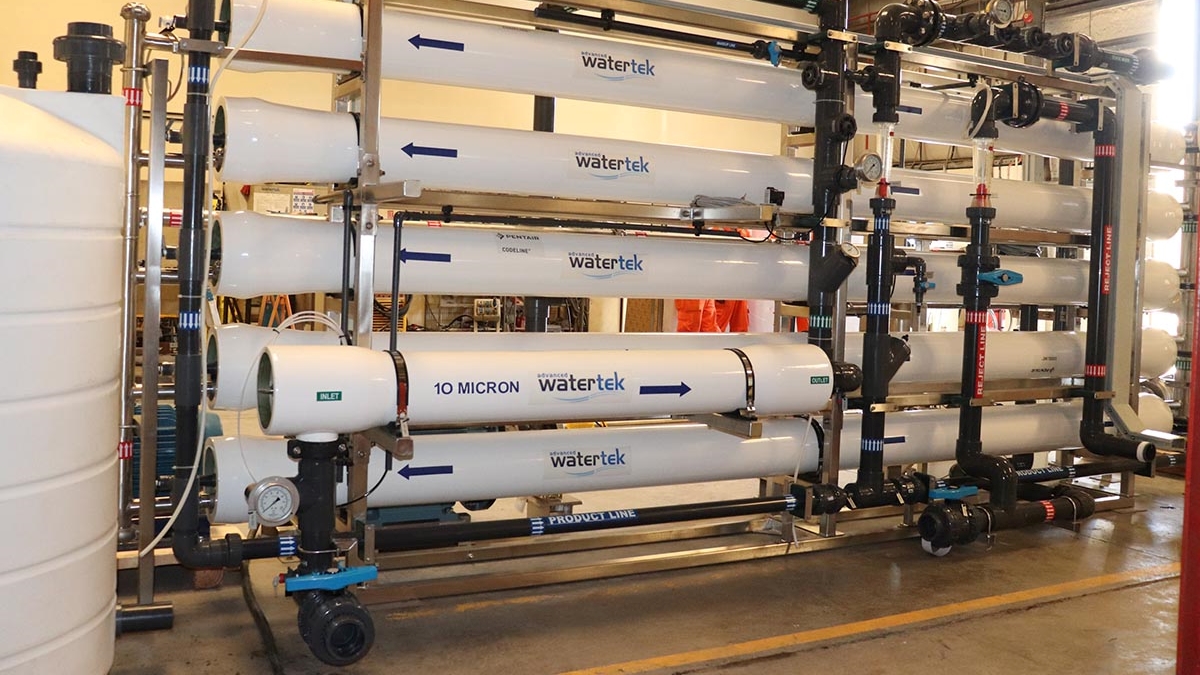A 45-minute speed boat ride from Kasab (Oman) brings you to a quaint island-village called Kumzar. Residents of this village, rely on a Sea Water Desalination Plant (Reverse Osmosis Plant) for their drinking water supply. Given that this plant was in service for over a decade, the plant operator, a local contracting company, appointed Advanced Watertek to build a new Reverse Osmosis plant with higher production capacity and energy efficiency.
Kumzar Village being a small port, only small ferries, dhows, or speed boats are locally available for carrying of cargo to the island. Special army vessels are commissioned for larger consignments if required.
Keeping size restrictions in mind for transportation, loading & unloading without any lifting equipments, the Engineer Design Team at Advanced Watertek visited the site and designed an RO system using what they called the ‘nuts-bolts method’. RO components were dismantled for easy handling and transportation and then re-assembled on-site. The dismantled parts were conveniently transported using boats locally available at Kasab. Simple as it sounds, it is a job that requires skill and technical know-how to ensure proper functioning as per design specifications. Eliminating the use of a special vessel for transportation was a significant cost saving for the client.
Increase in production capacity and energy efficiency achieved without substantial increase in system size: The system capacity of the old RO Plant was 100m3 per day, while the new RO plant was designed to have a system capacity of 300m3 per day. This meant an increase in the number of membrane vessels as well as feed pump and high-pressure pump capacity and size. Advanced Watertek introduced an energy recovery device into the design to recover wasted high pressure brine energy, in turn reducing the high-pressure pump & motor size as well as lowering energy consumption. The result was a higher capacity, energy efficient system without considerable increase in the overall footprint of the system.
Mohammad Farghaly said: “Not only did we deliver a compact yet flexible construction, but the client saved approximately 40% of their energy consumption by the introduction of an Energy recovery device into system design.”



